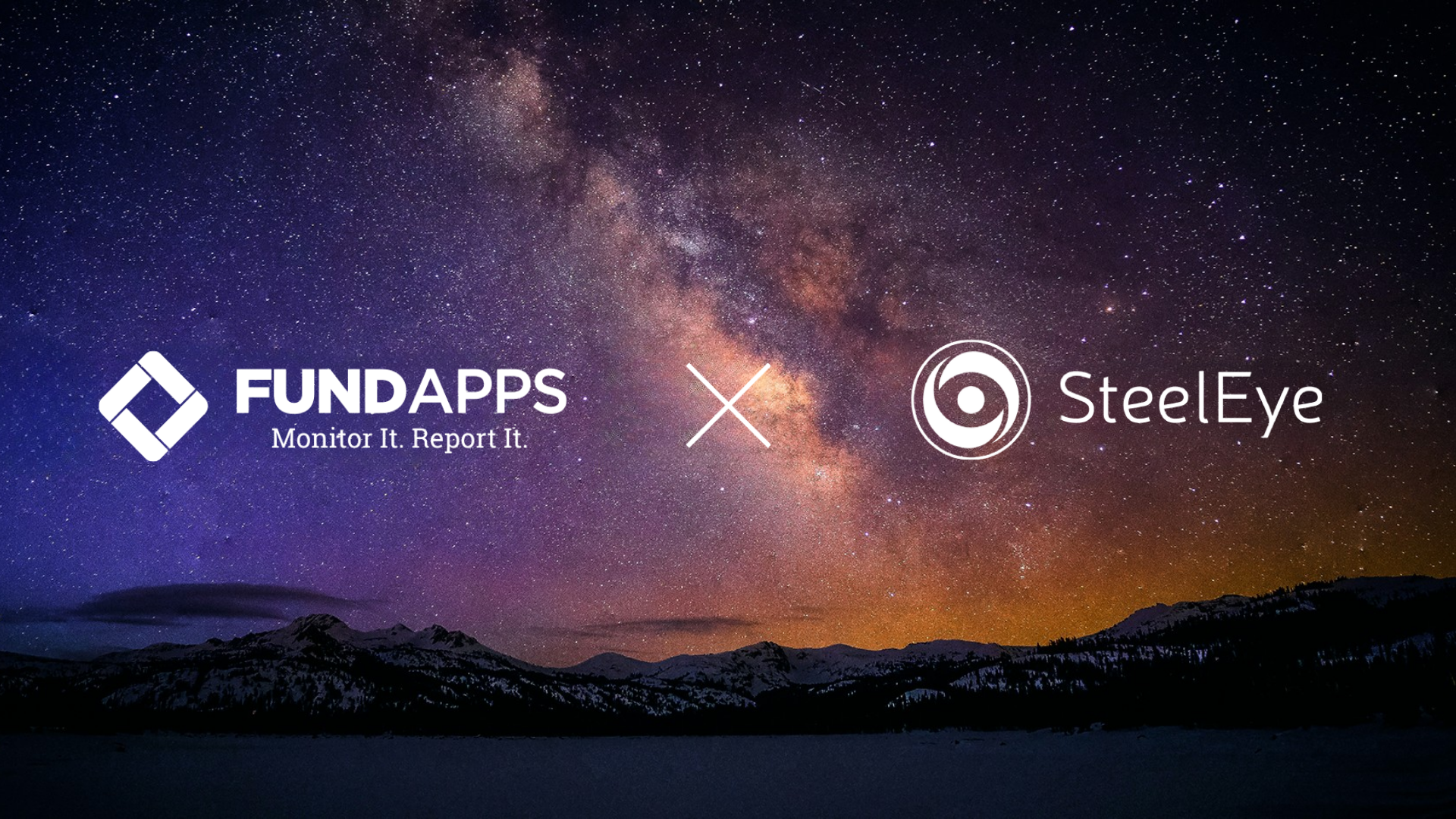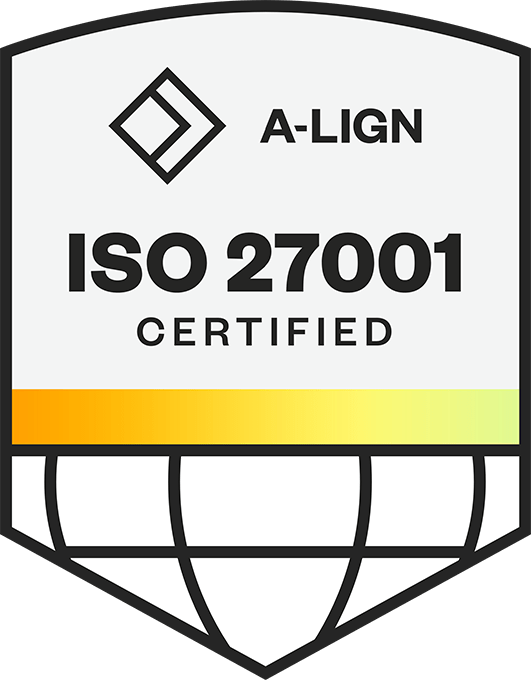The Compliance Officer stands as the guardian against regulatory breaches, market abuse, and the misuse of sensitive information. As the guardian of your firm’s adherence to financial regulations and data protection standards, you oversee a vast amount of sensitive data. This can include everything from order and trade records to firm-wide communications such as emails, instant messages, and voice recordings.
Platforms like SteelEye provide robust security for the data they house, but they must also offer ways for authorised users to log in. The common methods – Username/Password, Username/Password with Multi-Factor Authentication (MFA), or Single Sign-On (SSO) – represent different levels of security at the point of user access. While traditional passwords are familiar, and MFA adds a crucial layer, the inherent weaknesses associated with managing user credentials via passwords create significant, often underestimated, compliance risks for your firm, regardless of the underlying platform's security.
This article is written specifically for you, the Compliance Officer. It cuts through the technical jargon to explain why relying on traditional user login methods like passwords to access critical platforms like SteelEye creates a precarious compliance position for your organisation. It will demonstrate how Single Sign-On (SSO), far from being a mere convenience, serves as a critical compliance shield, offering the centralised control, auditability, and enhanced security necessary for your firm to meet its regulatory obligations when accessing vital vendor systems.
Prefer to listen? Take this blog on the go with our AI-generated podcast by listening here.
Contents
The Compliance Officer's Challenge: Managing Highly sensitive data

Compliance Officers in financial services bear substantial responsibility for overseeing programmes that protect against market abuse, ensure fair trading, and meet evolving regulatory mandates. These responsibilities typically include:
-
Monitoring Trading Activities: You may be tasked with verifying that all order and trade records are captured properly, that employees’ trading activities comply with regulations (like MiFID II in Europe or SEC rules in the US), and that any suspicious transactions are flagged and investigated.
-
Surveillance of Communications: In many jurisdictions, firms are required to keep records of electronic communications related to business transactions. This includes emails, chat messages, phone calls, and other channels used by employees or relevant third parties. Compliance Officers must ensure that these communication records are securely stored, tamper-proof, and readily accessible for audits or regulatory inquiries.
Login Methods
To effectively assess the risks and benefits, let's clarify the core login methods from a compliance perspective, focusing on how they function when your users access a critical vendor system holding sensitive data.

Username / Password: The Foundational (but Flawed) User Access Layer
This is the basic lock-and-key that your user possesses. A user provides something they know (password) linked to their identity (username) to request access to the vendor platform. Its simplicity is appealing but deceptive. From a compliance standpoint, allowing users to rely solely on this method to access systems containing market-sensitive communications or trade data is increasingly untenable for your firm. If that single user 'key' is copied (password stolen or guessed), the user's authorised access path to the vault of sensitive compliance data is compromised.

Multi-Factor Authentication (MFA): Adding Bolts to the User's Door
MFA strengthens the user's authentication process by requiring additional proof of identity beyond their password. It demands verification from at least two different categories: something you know (password), something you have (phone app code, security key), or something you are (fingerprint, face scan). Adding MFA significantly raises the bar for attackers trying to impersonate your user compared to passwords alone and is often a regulatory expectation for accessing sensitive systems. However, it's crucial to understand that MFA typically supplements the user's password; it doesn't eliminate the password's inherent weaknesses. The user's 'key' (password) can still be stolen, even if the 'deadbolt' (MFA) provides an extra hurdle.

Single Sign-On (SSO): Your Firm's Centralised Security Hub for Access
SSO operates differently, shifting control to your organisation. It allows your users to authenticate once through your firm's central, trusted system – the Identity Provider (IdP) – and then gain access to multiple authorised applications, including the SteelEye platform, without re-entering credentials for each. Think of your corporate security badge granting access to specific, authorised buildings (applications) after you've verified your identity at the main gate (your firm's IdP). Your IdP securely communicates with the vendor platform (the Service Provider or SP) using digital tokens, confirming the user's identity without sharing their actual password with the vendor system.
For a Compliance Officer, SSO represents a shift from managing countless individual user keys to overseeing a single, highly secured master access system controlled by your firm.
The Compliance Minefield: User Credential Weaknesses and the Offboarding Gap
The downsides of relying solely on user passwords for accessing critical systems are well-documented and create significant compliance risks for your firm. These include the pervasive issue of password reuse across multiple sites, where a breach elsewhere can compromise access to sensitive vendor data; the use of weak or easily guessable passwords that fall prey to automated attacks; the susceptibility of users to phishing attacks designed to steal credentials directly; the effectiveness of credential stuffing where attackers use lists of previously breached passwords; and the inherent risks associated with insider threats or accidental exposure through password sharing. While MFA adds a layer of security, it doesn't negate these underlying password vulnerabilities.

Mind the (Offboarding) Gap
Perhaps the most overlooked vulnerability created by individual user credentials (Username, even with MFA) for external vendor systems is the offboarding gap.
When an employee leaves your organisation, their access to internal systems is typically revoked promptly through established HR and IT processes linked to your central directory (like Active Directory). But what about their access to critical third-party platforms where they used separate credentials?
-
Lingering Access Risk: If the departing employee had a unique Username (and potentially registered MFA) directly with the vendor system, that access remains active unless someone manually remembers and takes action to disable it within the vendor's platform. This manual process is highly prone to error and omission, especially in large organisations or those with high turnover.
-
Direct Compliance Violation: This 'lingering access' means a former employee could potentially still log in to systems containing highly sensitive communications or trade data long after their departure. This constitutes a major security risk and a direct violation of access control principles mandated by regulations like NYDFS Part 500.7, which requires prompt termination of access privileges.
-
Audit: Demonstrating to auditors that access for all departed employees has been consistently and promptly revoked across all critical third-party systems becomes incredibly difficult and resource-intensive when relying on manual de-provisioning for each platform.
Why User MFA Alone Isn't Enough: Addressing Modern Threats to User Credentials
While requiring users to enable MFA on their password-based logins is a vital security upgrade, relying on this approach without the centralised control of SSO leaves significant vulnerabilities related to user credential compromise.

The Rise of MFA Fatigue Attacks Targeting Users
Attackers, knowing a user's password (perhaps from a previous breach), can bombard the user's MFA device (e.g., phone app) with push notification approval requests. The goal is to annoy or confuse the user into mistakenly approving a malicious login attempt just to stop the notifications. High-profile breaches at major companies have utilised this tactic against employees. If successful against one of your users accessing the vendor system, the attacker gains full access as that user, despite MFA being 'present' on the user's account.

Adversary-in-the-Middle (AiTM) Phishing Bypasses Traditional User MFA
Sophisticated phishing attacks can defeat even user-enabled MFA methods like SMS codes, one-time passwords (OTPs), and push notifications. Attackers use proxy servers to intercept the user's password and the MFA code/approval entered on a fake site mimicking the vendor login. They relay this information in real-time to the legitimate vendor login page, stealing the resulting authenticated session token. This grants the attacker access to the sensitive compliance data as that user for that session, completely bypassing the user's MFA protection. The availability of Phishing-as-a-Service Toolkits makes this threat increasingly common.
SSO as a Compliance Control
Single Sign-On shifts user access control from a scattered vulnerability (dependent on individual user password hygiene) to a centralised strength managed by your firm. This directly addresses the Compliance Officer's need for secure, auditable access to critical vendor systems like SteelEye.
To further streamline access management, SCIM 2.0 (System for Cross-domain Identity Management) can be introduced and paired with SSO. SCIM automates user provisioning, management, and de-provisioning from a centralised IdP, ensuring real-time synchronisation of user access rights across critical vendor systems such as SteelEye. This reduces manual overhead, enhances security by eliminating access gaps, and strengthens compliance posture.

Centralised Command for Your Access Governance
-
Gain Unified Access Oversight: Your firm manages access to the vendor platform (and potentially many others) via your central IdP. You gain a single point of control to grant, modify, or revoke user access, simplifying the enforcement of the principle of least privilege for sensitive compliance data held within the vendor system.
-
One Credential Set Per User to Protect: Your users primarily need to defend their single IdP login credentials, managed under your firm's policies. This dramatically shrinks the attack surface related to vendor access compared to users managing dozens of separate passwords.
-
User Passwords Not Stored by the Vendor: Critically, standard SSO protocols (like SAML) mean the vendor platform (the Service Provider, e.g., SteelEye) typically never stores or sees your users' actual passwords. Authentication relies on secure tokens issued by your IdP. This means that even if an attacker targets the vendor platform directly, your users' core passwords (managed by your IdP) are not stored there, limiting the potential impact of a vendor-side incident on your users' primary credentials.
-
Efficient Onboarding/Offboarding: New users get appropriate access to vendor systems via their central IdP profile managed by your IT/HR processes. Crucially, when an employee departs, disabling their single SSO account instantly revokes their access to the vendor platform and all other connected applications. This eliminates the dangerous risk of 'lingering access' where former employees retain access to sensitive communications or trade data via forgotten individual accounts, a direct violation of regulations like NYDFS Part 500.7.
-
Centralised, Comprehensive Audit Logs: All login attempts (successful and failed) by your users to the vendor system via SSO are logged centrally by your IdP. This creates a unified, easily accessible record controlled by your firm for investigations and audits, rather than relying solely on potentially disparate logs from the vendor application.
SSO transforms your firm's control over user access to critical vendor systems. It shifts the burden from relying on individual user password security to a centralised, manageable, and auditable compliance control within your organisation. It directly addresses your need for strong authentication enforcement, least privilege, timely access revocation, and clear audit trails – all essential for protecting sensitive compliance data housed in secure third-party platforms.
Recent Authentication Developments & The Future of Secure Access Management
The future of secure access management points towards increasingly intelligent, seamless, and risk-aware systems, moving decisively beyond traditional passwords. We see a clear trend towards passwordless methods like Passkeys, built on phishing-resistant FIDO2 standards, gaining widespread adoption.
Simultaneously, biometrics are evolving beyond simple device unlocks to become integral authentication factors, leveraging unique user characteristics like fingerprints, facial recognition, or even behavioural patterns.
This paves the way for adaptive, context-aware authentication, where the system dynamically assesses risk based on factors like location, device health, and user behaviour, applying stronger verification like MFA only when necessary. Underpinning these advancements is Artificial Intelligence (AI), which enhances threat detection by analysing vast datasets for anomalies and powers the risk engines driving adaptive security, ultimately aiming for a more secure yet frictionless user experience.
For compliance-focused organisations, SSO provides the essential foundation upon which these sophisticated, future-proof access control strategies can be effectively built and managed.
Directly addressing Your Regulatory Mandates
SSO provides tangible mechanisms for your firm to demonstrate compliance:
-
SOX Section 404 (ICFR): Effective Internal Controls Over Financial Reporting are paramount. SSO supports your ICFR for vendor systems holding financial data (like trade records) by:
-
Enforcing Access Control: Centralised management ensures only authorised users from your firm access these systems.
-
Ensuring Timely De-provisioning: Instantly revoking access upon termination prevents unauthorised post-employment access, a key control managed by your firm.
-
Mandating Strong Authentication (MFA): Facilitates your enforcement of MFA, crucial for protecting financial system integrity.
-
Providing Clear Audit Trails: Centralised logs from your IdP offer readily available proof for auditors verifying access controls.
-
NYDFS Part 500: SSO helps your firm meet multiple requirements for systems holding Nonpublic Information (NPI):
-
500.7 (Access Privileges): Centralised control simplifies limiting access, managing privileges, ensuring prompt termination, and periodic reviews – all managed by your firm.
-
500.6 (Audit Trail): Centralised SSO logs provide the necessary audit trail originating from your system for event reconstruction and incident detection.
-
500.12 (MFA): Acts as the enforcement point for your mandatory MFA policy when users access systems with NPI.
-
500.14 (Monitoring): Centralised logs enable monitoring of your authorised users' activity to detect unauthorised access or tampering.
-
GDPR Article 32 (Security of Processing): Requires appropriate technical and organisational measures for data security. SSO contributes by:
-
Implementing Access Control: Centralised management helps ensure personal data (within communications/trades) is accessed only by authorised personnel from your firm.
-
Enabling Strong Authentication: Enforcing MFA via your SSO is a key technical measure.
-
Supporting Accountability: Centralised logs support your firm's accountability and ability to demonstrate appropriate security measures.
Why SSO is Your Firm's Essential Compliance Shield
As a Compliance Officer, the security of how your users access systems holding sensitive communications and trade data is not just an IT issue – it's a core compliance responsibility for your firm. Traditional username and password methods, managed by individual users, present unacceptable risks, even when supplemented by user-enabled MFA. These methods make your users vulnerable to credential theft, reuse, and sophisticated bypass techniques, creating direct pathways to compliance failures under SOX, NYDFS Part 500, GLBA, and GDPR.
Single Sign-On, implemented and controlled by your organisation and enforced with strong, phishing-resistant MFA, offers a fundamentally more secure and compliant approach to managing user access to third-party platforms. It provides the centralised control necessary to manage access effectively according to your policies, the robust audit trails required to demonstrate compliance, and the streamlined user lifecycle management essential for mitigating risks associated with employee turnover. SSO transforms user access control from a distributed vulnerability dependent on user behaviour into a centralised, defensible compliance strength managed by your firm.
In the face of evolving threats and increasing regulatory scrutiny, advocating for and implementing SSO for user access to critical vendor platforms like SteelEye is not merely a best practice; it is an essential measure for your firm to protect its data, reputation, and regulatory standing. It is the Compliance Officer's shield in the digital age, providing the necessary security and oversight to confidently manage user access in the complex world of modern financial services compliance.
Looking ahead, compliance teams that implement SSO plus adaptive, risk-based MFA will be positioned to handle upcoming regulations and the continued rise of advanced phishing attacks. Ultimately, proactive adoption of these authentication controls reflects best practices that may well become tomorrow’s regulatory mandates.
HAVE A CONVERSATION
If you’re interested in enhancing data security and simplifying compliance management through robust authentication processes, we invite you to:
-
Book a Demo and see firsthand how SteelEye's secure compliance platform leverages Single Sign-On (SSO) and advanced authentication protocols to protect sensitive vendor data, streamline user access, and strengthen your compliance controls.
-
Sign up for our Newsletter to stay informed on the latest developments in cybersecurity, authentication best practices, and actionable insights tailored specifically for financial services compliance professionals.

-1.png)














